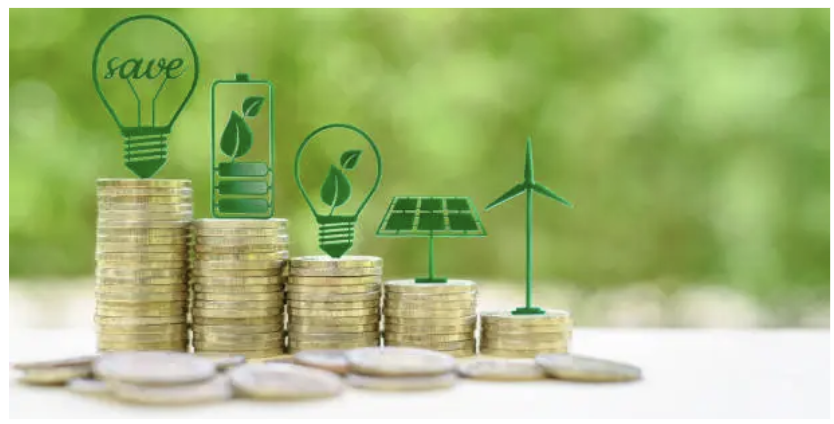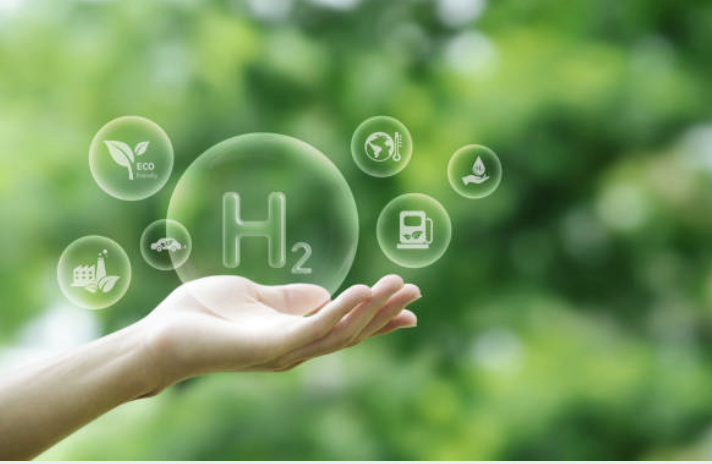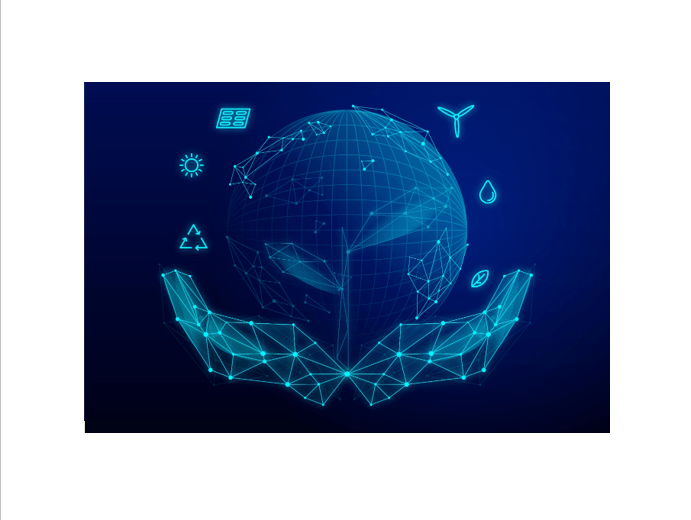Ind
1.1 India wants to produce green hydrogen to reduce its dependence on fossil fuels and meets its climate goals. India is also keen to be a global export hub for green hydrogen. The government has voiced support for the sector through the Green Hydrogen Policy and the National Green Hydrogen Mission - with a financial outlay of nearly Rs. 19,800 crores. It recently released a Rs. 400 crore R&D roadmap to develop a vibrant research and development ecosystem to help commercialize green hydrogen.
1.2 India has also established its green hydrogen standard – one of the few countries to do so. To qualify as “green” - the emission for producing one kilogram of green hydrogen should not exceed two kilograms of carbon-dioxide. The central government has announced production linked incentive (PLI) schemes for producing green hydrogen and manufacturing electrolysers. Electrolyser production can be an important sector for India and an incentive scheme will provide the right push for domestic manufacture of green hydrogen. According to Norwegian research house Rystad Energy, India is emerging as one of the world’s most important electrolyser manufacturing centres. It expects India to have 6 electrolyser factories with a combined capacity of over 8GW by 2025.
1.3 Indian states are also rolling out state-level schemes to facilitate green hydrogen production – but this is at its infancy. There is a need to drive investments across the entire green hydrogen value chain. The demand-side of the equation also must be addressed – end-users must be incentivised/ mandated to make the switch to green hydrogen. According to reports, this is being done in key sectors such as fertilisers, steel, oil and gas to boost domestic consumption.
1.4 Green hydrogen production poses high entry barriers – such as high land acquisition, high productions costs, regular supply of electricity and water, need for a skilled workforce. This makes it ideal for investment by established players. Energy giants such as Reliance Industries Limited, Adani, Larsen & Toubro have made pilot investments in green hydrogen and are aiming to expand domestic operations for manufacture of green hydrogen.
1.5 On the other hand, opportunities for start-ups lie in improving quantum and efficiency of hydrogen storage and in reduction of high costs for electrolysers. For instance, Hygenco provides smart green hydrogen solutions to corporate entities. Newtrace produces scalable electrolyser technology and has come up with electrolysers at significantly lower costs.
Policy framework
1.6 The renewable sector in India is regulated through a patchwork of laws and regulations as well as specific policies, both at the central and state level. This note focuses on the policies surrounding green hydrogen.
1.7 The Ministry of New and Renewable Energy (“MNRE”) is responsible for all matters relating to renewable energy, including developing policies and programmes to promote new and renewable energy sources to ensure energy security in the country. The Ministry of Power has the power to regulate tariffs and to set up stand-alone systems for renewable sources of energy in India, such as solar power plants, hydro plants etc.
1.8 National Hydrogen Mission (“NHM”): The Prime Minister launched the country’s National Hydrogen Mission on India’s 75th Independence Day – 15 August 2021. The aim of the NHM is to make India a global hub for manufacturing of hydrogen (especially green hydrogen) and fuel cell technology. It involves supporting manufacturing through incentives and facilitative policies, and putting in place a framework for standards and regulation of hydrogen technologies. Another focus area is to create demand for hydrogen in specific areas, which could involve mandating the use of green hydrogen in certain industries.
1.9 Green Hydrogen Policy: In February 2022, the power ministry released a ‘Green Hydrogen Policy.’ The policy offers incentives to encourage production of green hydrogen. These include – having a single portal for carrying out statutory clearances and other activities in a time-bound manner, permitting manufacturers to bank surplus unconsumed power for a period of up to 30 days with a distribution company, allowing manufacturers access to the power markets and inter-state power grids on priority, waiving inter-state transmission charges for 25 years for plants commissioned before 30 June 2025, and allowing manufacturers to set up bunkers near ports for storage. The policy aims to meet the production target of 5 million tonne per year of green hydrogen by 2030.
1.10 National Green Hydrogen Mission: In January 2023, India’s Union Cabinet approved the National Green Hydrogen Mission (“Mission”) with a financial outlay of nearly Rs. 19,800 crores. The Mission comprises multiple components – the Strategic Interventions for Green Hydrogen Transition Programme (“SIGHT”), pilot projects in key end-use sectors like steel, shipping, energy storage etc., R&D and other components. MNRE will formulate the scheme guidelines for their implementation.
1.11 The goal of the Mission is to facilitate private sector investment, ensure development of technology, establish green hydrogen standards, and reduce costs. The intended outcomes include – (i) production of 5 MMT (Million Metric Tonne) of green hydrogen per annum with an associated renewable energy capacity addition of about 125 GW; (ii) Rs. 8 lakh crores in total investments; (iii) generation of 6 lakh jobs; (iv) abatement of nearly 50 MMT of annual greenhouse gas emissions; and (v) cumulative reduction in fossil fuels imports of over Rs. 1 lakh crore. The Mission will be implemented in a phased manner, with the initial focus being on the use of green hydrogen in sectors that are already using hydrogen and developing a robust green hydrogen ecosystem. The next phase of the Mission will build on the first phase and will implement green hydrogen initiatives in other sectors of the economy.
1.12 SIGHT: SIGHT comprises two financial incentive mechanisms – one, for the domestic manufacturing of electrolysers, and second, for the production of green hydrogen. Under SIGHT, the Solar Energy Corporation of India floated a tender in July 2023 for setting up a production facility of 4.5 lakh tonne of green hydrogen. In June 2023, the Indian government announced PLI schemes for – i) production of green hydrogen (with an outlay of Rs. 13,050 crore); and ii) manufacturing of electrolysers in India (with an allocation of Rs. 4,440 crore). The incentives under the SIGHT programme for electrolyser manufacturing start from Rs. 4440 per kW in the first year and end at Rs. 1480 per kW in the fifth year. The SIGHT programme for green hydrogen production (Mode-I) provides incentives which are capped at Rs. 50/kg, Rs. 40/kg and Rs. 30/kg for the first, second and third year respectively.
1.13 R&D: In October 2023, MNRE released the R&D roadmap for the Mission, along with a ‘national single window system’ to provide a unified platform for companies to secure approvals for projects under the Mission. According to the roadmap, the initial focus is on mission-mode projects that will yield immediate results. The R&D framework envisages a public private partnership (to be called the Strategic Hydrogen Innovation Partnership (“SHIP”)) with inputs and funding from both industry and the government, strategic international partnerships, and participation in R&D by MSMEs and startups. The goal will be to promote and enhance the affordability, efficiency, safety and reliability of green hydrogen technology.
1.14 India has entered bilateral arrangements/ partnerships for cooperation on green hydrogen technology with countries such as USA, UAE, Saudi Arabia. Australia, France and is reportedly in talks with EU, Singapore, Panama. The focus of many of these bilateral partnerships is on establishing common certification, regulation and standards for green hydrogen, besides promoting Indian exports.
2 PART III: RECENT ACTIVITY & INITIATIVES
Some recent initiatives by the Indian government/ its instrumentalities to promote green hydrogen use and adoption include:
- Launch of operational trial of green-hydrogen fuelled buses in the Delhi-NCR area and in Ladakh.
- Launch of India’s first hydrogen train, and the ‘Hydrogen for Heritage’ initiative – to operate 35 Hydrogen trains as an alternative to diesel engines on heritage routes.
- Focus on developing shipping ports as green hydrogen hubs with green hydrogen/ ammonia bunkers and refuelling facilities – MoU between NTPC Green Energy Ltd and Kolkata Port; green hydrogen projects by the Ministry of Ports, Shipping and Waterways at Kandla, Tuticorin and Paradip;
- Potential inclusion of green hydrogen sector under the ambit of priority sector lending. This is yet to be announced by the government and is reportedly only at the proposal stage.
- The central government has identified 10 states for setting up green hydrogen manufacturing ecosystems. These include Karnataka, Odisha, Gujarat, Rajasthan, Maharashtra, Tamil Nadu, Andhra Pradesh, Kerala, Madhya Pradesh and West Bengal.
- Several state-owned public sector undertakings have set up pilot projects for green hydrogen production.
- The petroleum and natural gas ministry has asked oil companies to submit a plan for the adoption of green hydrogen to accelerate their energy transition.
- In April 2023, the Department of Science and Technology invited expressions of interests for the development of hydrogen valley innovation clusters. A hydrogen valley is a region where hydrogen is useful for more than one end-sector or application in mobility, industry and energy. The innovation cluster will provide funding for R&D activities necessary to demonstrate new green hydrogen technologies.
- According to reports, the Adani Group is planning to raise up to USD 4 billion to establish manufacturing facilities for green hydrogen. Adani New Industries, a subsidiary of Adani Enterprises, is reportedly in preliminary discussions with several domestic and international banks.
Authored by the sustainability team at Ikigai Law
Image Credit: IStock










